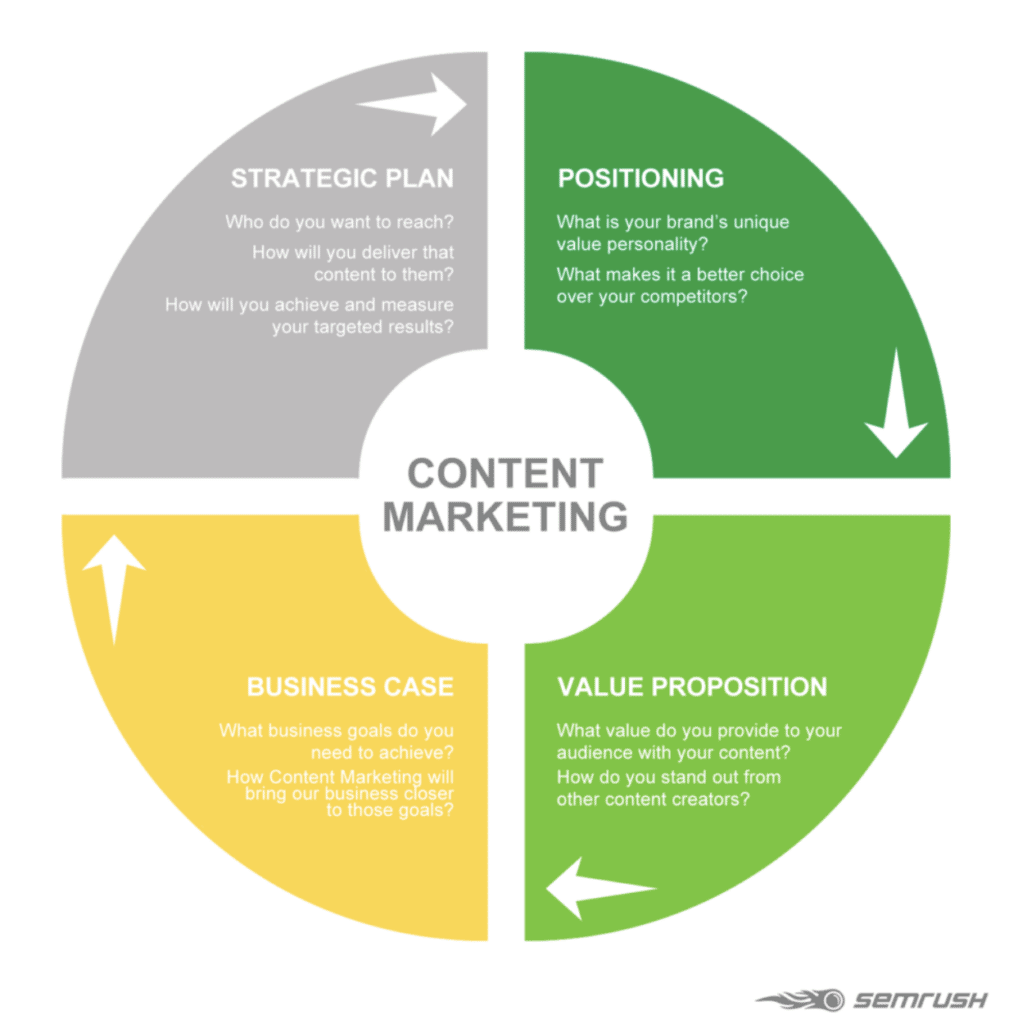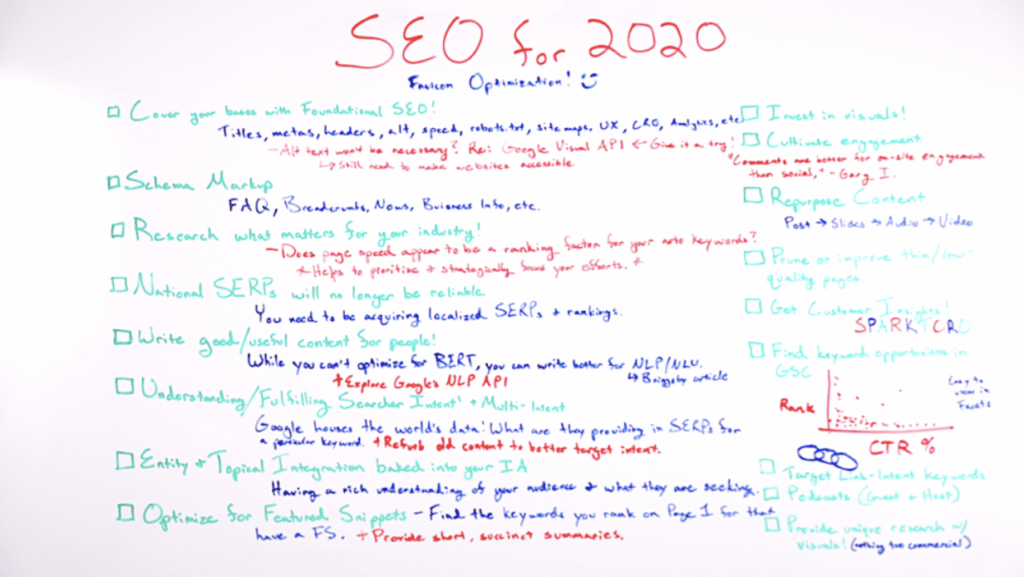No matter what type of business you’re running, the desire and need to grow is always something that is top of mind. The thought of “growth” essentially means more brand awareness, customers, revenue, and higher retention.
So what are some effective ways to really attract the right people to your website and then convert them into leads? The simple answer is: content.
To be more specific, content is truly at the heart of everything that you do. Whether you’re positioning a specific display ad, webinar, video, or email, making sure that you have good content to support your efforts is critical for success.
Before I dive into today’s blog post, let’s check out some lead generation content marketing stats to help set the tone:
- 91% of B2B marketers say they use content marketing in their overall strategy.
- More than 70% of B2B marketers say they can demonstrate, with metrics, how content marketing has increased audience engagement and their number of leads.
- 60% of B2B marketers measure success with web traffic, while 51% use sales lead quality, and 45% use social media sharing.
- 64% of content marketers say they need more education on how to build a scalable content strategy.
- 61% of marketers say generating traffic and leads is a top inbound marketing challenge at their organization.
- Buyers say they will share information in exchange for webinars (79%), white papers (76%), third-party/analyst reports (66%), e-books (63%), and case studies (57%).
- B2B marketers say articles/blog posts, white papers, and videos are the three most valuable content marketing types to move prospects through the sales funnel.
- 78% say higher quality, more efficient content creation led to the increase in content marketing success.
Let’s get to it!
Start with a simple content strategy
63% of businesses don’t have a documented content strategy, which can make it difficult to execute properly and ensure full alignment among sales, marketing, and even product.
In order to be effective, you have to develop a simple content strategy that supports your overall business objectives. Departments can certainly set goals and track KPIs that matter to them, but there should be an overarching theme everyone is striving toward.

Aside from knowing “who” you’re going after and developing personas around that, I think it’s equally important to decide the following:
- What you’ll be writing about.
- Who is going to help with the content development and production processes.
- The purpose of each asset that’s going to be produced.
- Where each asset falls within the marketing funnel itself.
- Indicators for success that are reported weekly, monthly, and quarterly.
Ensuring that you’re flexible but also intentional with how content is produced, the cadence, and overall expectations will help drive success.
1. In-depth videos
Video marketing is a key channel, especially since YouTube is the second largest search engine in the world (second to Google). But successful video marketing isn’t just about creating commercials.
Instead, skip the sales pitch altogether and focus on video content that provides instructions and solves problems. People don’t just want to read about how to do something — they want to see it. Most importantly, they want to see how the experts do it.
Think about your products or services: what questions will your users have so they can get the most from their purchase? If you sell makeup, do a video tutorial on how to apply it. If you have a software product, do a video demo. Walk them through the process. Hold their hand and give them confidence. When you provide them actionable value, customers will be more likely to see you as a reliable expert.
A great example is Moz’s Whiteboard Fridays. I’ve followed them for years and have always enjoyed the tips and tricks they offer within these videos.

2. eBooks and guides
Create helpful eBooks and guides that will provide actionable steps to solving a specific problem. Getting someone to download these assets is one thing, but getting them to the point where they find it useful enough to take the conversation further with you is another.
If you position your eBook and guides as a way to introduce your expertise to a problem and explicitly being clear on how you solve that problem, your chances will be much higher with driving a website visit to a lead and so on.
More specifically, you should go as far as just simply repurposing popular blog posts into downloadable eBooks and guides. Doing so will alleviate the amount of time and effort needed to create ‘new’ content and also ensure that you’re already taking content that’s performing well and consolidating it.
3. Teach something valuable through blogging
92% of companies who blog multiple times per day have acquired at least one new customer and businesses that blog witness their monthly leads rise by 126% more than businesses who don’t.
Knowing this should help drive you to ensure that blogging becomes a weekly or monthly part of your business. The great thing about blogging is that you can leverage it to provide more insights about your products and services, including CTAs, to drive sales. You can also leverage it to include special promotions, feature loyal customers, or display testimonials, case studies, etc.
You can easily use your blog as a creative outlet beyond just text-based posts too.
Here are a few stats to check out
- 37% of marketers said visual marketing was the most important form of content for their business, second only to blogging (38%).
- When people hear information, they’re likely to remember only 10% of that information three days later. However, if a relevant image is paired with that same information, people retained 65% of the information three days later.
- 4X as many consumers prefer to watch a video about a product than to read about it.
Just getting started with your blog? SEMRush offers a content marketing toolkit that helps you through the whole process — from finding relevant topics, planning out posts, writing them, and then optimizing the blog posts after they are published. SEMRush is offering a free trial, so check it out here.
4. Mini email courses
Another great way to ramp up your content is to develop an email drip crash course. I’d recommend looking at doing a 7-day course where you send out an email once per day covering a well-received topic.

Once the course ends, you can look at the performance of the course based on the following insights:
- What was the best subject line?
- Which CTAs drove the highest clicks?
- Which email within the drip drove the best site traffic?
- Did you get any new sales opportunities from those who completed the course?
Finally, the importance that email plays in general for repurposing your content should be a top priority because of these reasons:
- Shoppers spend 138% more when marketed to through email, as compared to those who do not receive email offers
- One study found that the ROI on email was 28.5% compared to 7% for direct mail
- Email is 40x more effective at acquiring customers than Facebook and Twitter combined
- 320% more revenue is driven from automated emails than non-automated emails
5. Templates and toolkits
Bonus Tip: Analytics should be your best friend
The best way to show the effectiveness of your content marketing efforts is to have the right analytics in place. Make sure you are tracking the following four simple funnel phases:
- Top-line KPIs (e.g. web visits, clicks, comments, shares, time-on-site, etc.) will help you see which type of content is actually getting the reach and engagement you are pushing for.
- From there, you’ll want to track actions taken with your content pieces which can account for new subscribers and downloaded content. Knowing these raw metrics will help you calculate the visit to lead %. A great overall metric you can present to your team (including the execs) to show progress.
- Next, understand the cycle from when the lead becomes an actual sale. This will help you calculate the lead to customer %. This phase is crucial for sales and marketing alignment. This will also help to ensure you have personalized content touch points throughout the buyer’s journey.
- Lastly, calculate the LTV (lifetime value) of each customer. Understand ‘where’ they found your content, ‘when’ they became a qualified lead and closed as a customer and how long they were a loyal customer (recurring purchases or subscription based sign up).





